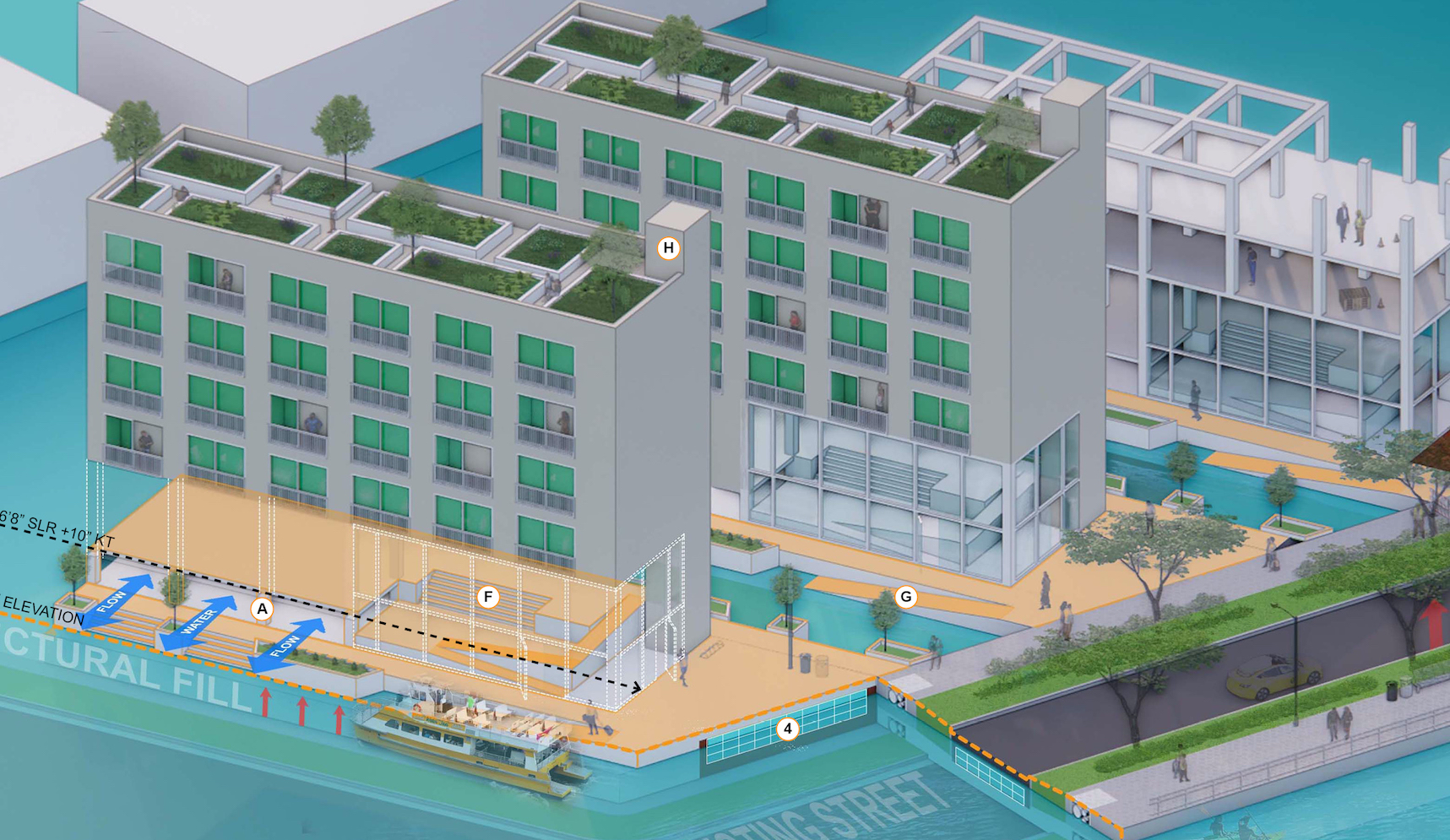Designing for future Waikīkī with sea-level rise earns honors
 Schematic of the UH project, "Envisioning Sea Level Rise Adaptation in Waikiki, Hawaiʻi"
Schematic of the UH project, "Envisioning Sea Level Rise Adaptation in Waikiki, Hawaiʻi"
Waikīkī—the economic hub of Hawaiʻi’s tourism industry—is threatened by flooding from sea-level rise, king tides, high wave events, rainfall and storm drain backflow, groundwater inundation and overflow of the Ala Wai Canal. University of Hawaiʻi research into this critical topic titled, “Envisioning Sea Level Rise Adaptation in Waikiki, Hawaiʻi,” received an honorable mention in the Unbuilt Project category at the 2022 Northwest and Pacific American Institute of Architects Honors and Design Awards in September.
Out of 100 projects entered by architects from Alaska, Washington, Oregon, Hawaiʻi, Idaho, Montana and the Marianas, 14 projects received recognition for design excellence that represents the finest standards in sustainability, innovation, building performance, and overall integration with client and surrounding community.
“Internationally, the United Nations sustainable development goals include taking ‘urgent action to combat climate change and its impacts’ because it affects all countries and disrupts national economies and lives,” said Wendy Meguro, the project leader and an associate professor with a joint appointment in the School of Architecture and UH Sea Grant College Program (Hawaiʻi Sea Grant). “Locally, the Hawaiʻi Sea Level Rise Vulnerability and Adaptation Report estimates a potential future $19 billion loss of land and structures. The flood adaptation methods and strategies we are exploring for Waikīkī may influence local design guides and policy and may be replicated elsewhere.”
The interdisciplinary design research team includes graduate research assistants and faculty from the UH Mānoa Environmental Research and Design Lab in the School of Architecture, Center for Smart Building and Community Design in Hawaiʻi Sea Grant, and Climate Resilience Collaborative in the School of Ocean and Earth Science and Technology.
Merging science and architecture
This research merges science with design to create conceptual architectural design renderings to visualize sea-level rise adaptation strategies over time for buildings, utilities, transportation and open space. The goals for these renderings are to compel discussion, contribute to design guides, pilot projects, and new policies that will prepare the community for future flooding. Feedback on adaptation strategies was solicited from more than 70 stakeholders and published as an online resource for future design teams and policy makers.
The awards jury considered design quality, functional utility, economy, environmental harmony, sustainability, accessibility, aesthetic delight, creativity, craftsmanship and innovation.
“I find this work to be very fulfilling, knowing that I am informing myself on issues like climate change impacts that will affect the future built environment and in extension, its occupants,” said Josephine Briones, who contributed to this research project as a Hawaiʻi Sea Grant fellow and continued after earning a doctor of architecture. “From the beginning, this project has aligned with my career interests for designing with sustainability as a priority, and has inspired me to learn more about how these impacts can be measured and influence change.”
Project collaborators include principal investigator Meguro; co-investigator Charles “Chip” Fletcher; graduate research assistants Briones and Ireland Castillo; outreach coordinators Eileen Peppard, Dolan Eversole, Melanie Lander; rendering tutors Chris Lomboy and Andrew Tang; and junior research assistants Aiko Tells and Desiree Malabed.
Funding was provided by Hawaiʻi Sea Grant’s Biennial Grant 2020–22 and the Office of Naval Research, Hawaiʻi Community Foundation and H.K.L. Castle Foundation.
The team continues to research and envision coastal resiliency, this time assessing adaptation options for a beach-front condominium site.
More project information: https://seagrant.soest.hawaii.edu/meguro-adapting-waikiki/
Read also on UH News.

